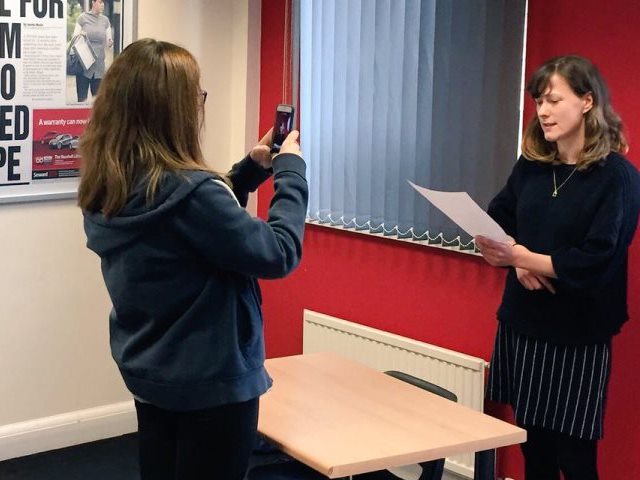Mobile journalism top tips for journalists
At a time when speed and responsiveness is everything, mobile journalism has become a journalists’ greatest tool, writes South West Londoner deputy editor James Ayles.
Whether it’s the internet, voice memos or the camera, mobiles are vital whatever aspect of journalism you want to pursue.
In particular, the filming function can prove incredibly useful for a journalist in the field.
Allied to any one of numerous editing apps, a journalist can record, edit and broadcast a news package from anywhere in the world instantaneously.
Mobile journalism is just one of many journalistic innovations that has become commonplace over the last few years, and demonstrates how reporters have adapted to constant technological change to keep ahead.
Yet whether you’re filming at a local fair or in a far-flung country, there are some key tips you must always follow with your MOJO.
Top tips for mobile journalism packages.
Memory
If you regularly take photos and videos using your phone, it is easy for the memory to fill up quickly. There aren’t much worse feelings than realising mid-interview that your phone is full and you can’t record anything else without deleting items you may not be finished with.
Before any interview, make sure you have space to film everything you need to, and get in the habit of keeping your phone as clear as possible at all times.

Sound
You may think you’ve found the perfect outdoors setting for your interview, but if it is next to a main road you’ll find it exceptionally hard to hear properly.
Likewise, if you’ve stepped back too far and your interviewee is quiet, you’ll face the same problem.
Before any interview, make sure you test the sound and find a place that not only sounds good, but looks good too.
‘Video is the most engaging thing in terms of social media,’ says @falsemorilles. 📱 #JournoFest pic.twitter.com/LA4FBkHG8D
— News Associates (@NewsAssociates) May 13, 2017
Airplane mode and lock mode
Before any filming, make sure you put your phone on airplane mode and take it off lock mode. Airplane mode will prevent you from receiving any phone calls, which will stop your recording and will also look rather unprofessional.
Secondly, lock mode can prevent your screen from tilting to landscape. Anything you film should be in landscape, so ensure this function isn’t interfering with your filming.

B-roll
You can never have enough b-roll. Used primarily to hide jump cuts between interviews, b-roll can also prove an effective storyteller if used right.
Be creative and always shoot more than you’ll think you’ll need.
Cut-out-and-keep: BBC advice to get best results when filming on any smartphone. (Point 3 refers to PNG, an internal BBC app; just use the filming app of your choice). #mojo pic.twitter.com/SOqguofFUX
— marc blank-settle (@MarcSettle) February 14, 2018
Editing
Keep it simple – anything edited on your phone needs to tell the story first.
Fancy time lapses, slow-mos or graphics are simply unrealistic and will look out of place in a mobile news report.
Short is often much better and will keep your audience engaged, so don’t feel like you have to include every single bit of video you’ve shot.
‘It’s about choosing the right platform,’ say @jonlaurence and @falsemorilles. #JournoFest pic.twitter.com/XpVpaOYmh8
— News Associates (@NewsAssociates) May 13, 2017
News Associates managing editor James Toney said: “The exciting thing about journalism today is the tools we have to tell our stories.
“In the past we were quick to apply labels to our industry – we had print media and broadcast media, and online media and social media. But these labels are superfluous – in reality it’s all just media. The old demarcation lines have come down – a journalist today must be able to do everything.
“We have more platforms to supply – we must knit words and video and graphics into compelling immersive content that goes far beyond the one dimensional text on a page. We have so many more ways to tell our stories now. We can use data and info graphics, images both moving and still to add depth and context.”
‘The story is always there, the format is just changing,’ says @OllyOsborne. #JournoFest
— News Associates (@NewsAssociates) May 13, 2017
Featured image courtesy of Marco Verch via Flickr, with thanks.


